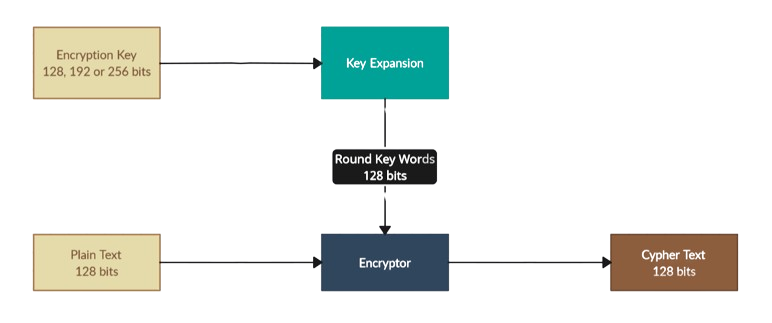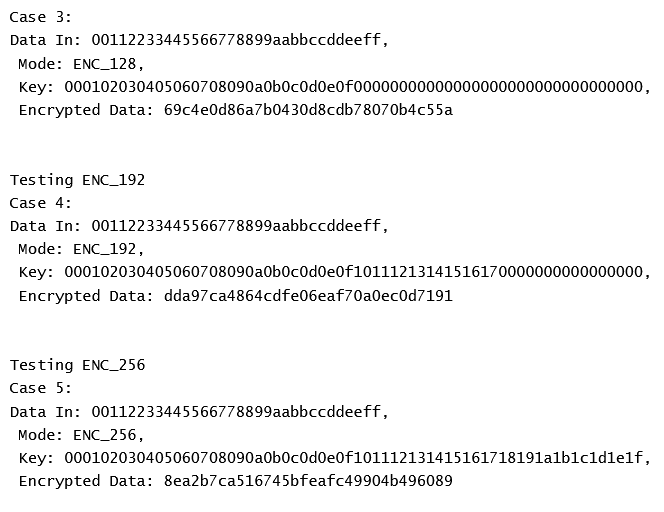Multi-Cycle AES Encryption Implementation (128, 192 & 256 bit Key Lengths) Using SystemVerilog
- NOOP: Halts the Operation of the Module Preserving the State.
- 128-bit key encryption.
- 192-bit key encryption.
- 256-bit key encryption.
The System has an Active Low Synchronous Reset.
-
The Key Expansion Module generates the required Key Words for each round with each edge of the Clock.
-
The Encryptor takes the Key Words and Operates on the Plain Text provided to generate the Cypher Text. It also provide two additional signals:
- Ready Signal: Which indicates that the Module can take the next plain text on the edge of the next cycle. This signal is also present whenever the module is idling.
- Data Valid Signal: Which is generated when the Cypher Text is Ready on the Output Bus.
-
The Mode Input takes one of four values:
- 0: Indicating No Operation.
- 1: 128-bit key encryption.
- 2: 192-bit key encryption.
- 3: 256-bit key encryption.
-
Number of Cycles for Each Encryption Mode:
- 128-bit key encryption: 1 Pre-Round + 10 Rounds (Total of 11).
- 192-bit key encryption: 1 Pre-Round + 12 Rounds (Total of 13).
- 256-bit key encryption: 1 Pre-Round + 14 Rounds (Total of 15).
Log Output
Simulation Waveform Snippet
https://edaplayground.com/x/Usss
- FIPS 197, Advanced Encryption Standard Documentation.
- "A Very Compact Rijndael S-box", David Canright.
- "Introduction To Cryptography And Network Security", Behrouz A. Forouzan.


